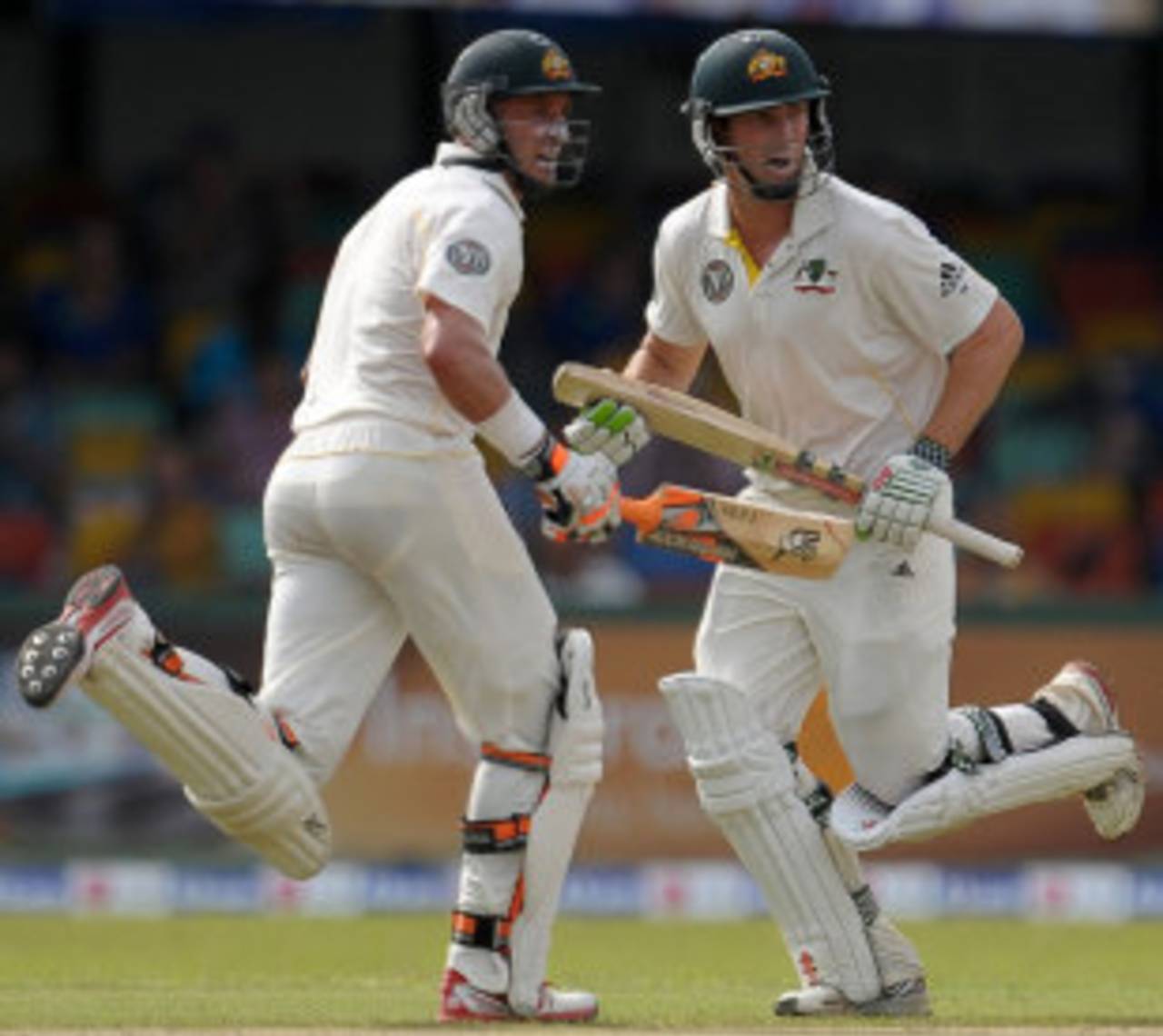In the recently concluded three-Test series in Sri Lanka, Michael Hussey was easily Australia's leading man: he scored almost twice as many runs as Australia's next-best player, Shaun Marsh, who was terrific too, averaging 80. In the process, Hussey became only the second overseas batsman to score
400-plus runs in a series in Sri Lanka. The first player to do so was Brian Lara in that unforgettable series in 2001, when he scored 688 in
six innings. His highest score in that series was 221, which at the time was the highest score by a visiting batsman in Sri Lanka. Since then, two batsmen have gone past it: Stephen Fleming scored an unbeaten 274 in 2003, and Chris Gayle hammered 333 last year.
The above paragraph lists plenty of achievements and numbers, but the one connecting factor is that they've all scored heavily in Sri Lanka, and they're all left-hand batsmen. Overall in the history of Test cricket,
left-handers in the top order (Nos.1-7) have done slightly better than their
right-hand counterparts, averaging 38.22 to 35.13. When Sri Lankan batsmen have batted at home, the difference is even lesser: right-hand batsmen in the top seven average 41.77, while left-handers average 42.85.
When overseas batsmen travel to Sri Lanka, though, the difference is huge: left-handers in the top order average 42.08, and their right-hand counterparts a mere 29.45. The difference of 12.63 is easily the highest when compared with the numbers in other overseas countries over the last three decades. Pakistan, South Africa and Australia are the other countries where the difference in averages is greater than five, but the Sri Lankan case is still a unique one: the average for left-handers is next only to those in Bangladesh and Zimbabwe, while for right-handers it is second from bottom. South Africa's difference is the second-highest, but it's the country where both right and left-handers have the poorest averages.
The table above indicates that the deviation in Sri Lanka is far more than in other countries. The overall numbers since 1980 show that for all batsmen in overseas Tests, right-handers score 33.83 runs per dismissals while left-handers manage 37.82 (for batsmen in the top seven only). The difference of nearly four runs is far lesser than the Sri Lankan difference of 12.63.
It's clear that Sri Lankan bowlers find it much easier to bowl against right-handers in Sri Lanka, but when they travel the numbers even out: in Tests outside Sri Lanka, right-hand top-order batsmen average 43.12 against them, compared to the left-handers' 41.30.
Which brings us to the Murali factor. Most offspinners prefer bowling to left-handers since they get the ball to turn away from them, but Muttiah Muralitharan was anything but a regular offspinner. Especially after adding the doosra to his armoury, Murali was more lethal against right-handers. Of his 800 Test wickets, 609 were right-handers; and since the middle of 2001, (from which period ESPNcricinfo has complete ball-by-ball data), Murali averaged 17.79 versus right-hand batsmen and 28.07 against left-handers. At home the corresponding numbers read 14.10 and 25.72.
These numbers tend to suggest that the Murali factor had a large hand to play for the poorer batting averages of right-hand overseas batsmen in Sri Lanka. However, the table below shows that in the home matches in which Murali didn't play, the gap between the averages for right- and left-handers doubled, to 21.61. Clearly, there seems to be something about the Sri Lankan pitches and conditions that suit left-hand batsmen, while causing right-handers to struggle a lot more.
Among the left-hand batsmen who scored plenty of runs in Sri Lanka was the former New Zealand captain Fleming, who struck two big unbeaten hundreds in
ten innings: 174 in 1998, and 274 in 2003. The most remarkable performance in a series, though, was Lara's in 2001, when he scored 688 in six innings; overall, he averaged more than 100 in his
seven innings in Sri Lanka.
The table below lists some of those who enjoyed playing in Sri Lanka, but there were others too: Vinod Kambli scored 249 runs in three innings, while more recently, Darren Bravo showed early signs of his potential, scoring 206 runs at 68.67.
Among all the left-hand successes, there were a few failures too. Justin Langer only managed 292 in
ten innings, but an even bigger surprise was Zimbabwe's Andy Flower: he was an excellent player of spin and averaged 117.14 in India, but in
14 innings in Sri Lanka, he managed only 304 runs at 23.38. (
Click here for the full list of left-hand top-order overseas batsmen in Sri Lanka.)
If most left-handers have thrived in Sri Lanka, then the right-handers haven't had it so good. Mark Waugh scored runs in almost every country he played in, but in ten innings in Sri Lanka his scores read thus: 5, 56, 0, 0, 0, 0, 6, 0, 10, 13 - a grand total of 90 runs at an average of 10.00. In all, Waugh scored 19 ducks in 128 Tests, of which five came in six matches in Sri Lanka.
Among others who haven't enjoyed Sri Lankan conditions much are Rahul Dravid, Jacques Kallis, and Mohammad Yousuf. All of them have career averages of more than 50, but their Sri Lankan average is in the 30s, with none of them managing more than once century. The top two overseas run-getters in Sri Lanka, though, have no such complaints - both Sachin Tendulkar and Virender Sehwag have been prolific, averaging more than 65 in Sri Lanka. (
Click here for the full list of top-order right-hand overseas batsmen in Sri Lanka.)
